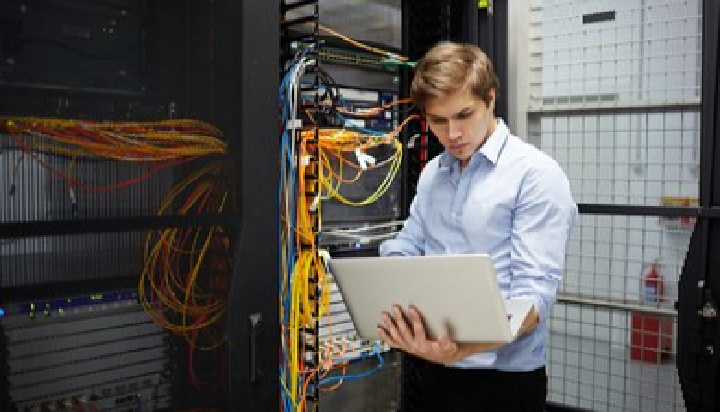When it comes to cloud computing, GPU cloud servers are the new black. With their ability to process thousands of data points in a fraction of the time and cost of traditional computing methods, they offer an invaluable asset when it comes to driving business performance and innovation. But how do you ensure that your servers are performing at optimal levels?
Here are some best practices for boosting GPU cloud server performance.
Choose Dedicated Instances for High-Performance
Computing Needs
When running intensive tasks like deep learning or database querying on GPU cloud servers, dedicated instances should be used instead of shared instances. This is because dedicated instances provide a higher level of control and thus allow users to fine-tune their environment and maximize performance.
For example, dedicated instances can be customized with different types of GPUs which are optimized for specific workloads, such as machine learning or graphics processing. Additionally, choosing dedicated instances allows users to set their own CPU cores and memory configurations in order to better match their requirements.
Optimize Memory Allocation
GPU cloud servers rely heavily on RAM intensive (Random Access Memory) in order to operate efficiently – but only if it is allocated correctly. For instance, if too much memory is allocated then the system will become sluggish due to competing processes vying for resources; however, if too little memory is allocated then certain tasks may not be able to run at all due to insufficient resources being available. As such, it’s important that users take the time to determine exactly how much memory their applications require in order for them to run optimally. This can help ensure that your GPU cloud server’s performance is maximized while simultaneously minimizing any potential bottlenecks caused by inefficient resource allocation.
Keep Your Servers Updated
One of the most important steps you can take when trying to maximize GPU cloud server performance is ensuring that all components are kept up-to-date with the latest versions of software and firmware. Not only does this prevent bugs from occurring but it also ensures that your server’s hardware and software remain compatible with any other systems you may have connected to it – something which could otherwise lead to disruptions in service or even outages if left unchecked. Having your IT team perform regular checks on all installed applications can help keep your system’s performance running at peak levels without any unexpected interruptions or downtime caused by outdated software versions or incompatibilities between components.
Monitor and Tune Your System
Monitoring and tuning your GPU cloud server performance is essential for ensuring optimal results. To do this, you should use monitoring tools like cAdvisor or system health monitors to track the overall performance of your system and look for potential problems such as resource contention or hardware issues.
Using tools like cAdvisor and system health monitors to monitor and tune your GPU cloud server performance can help you identify any bottlenecks in the system. These bottlenecks can be caused by inefficient resource allocation, outdated software or hardware incompatibilities, as well as conflicts between applications running on the server.
When running intensive tasks such as deep learning or database querying on GPU cloud servers, it is important to ensure that the system is running at optimal performance levels. This can be achieved by utilizing dedicated instances instead of shared instances, optimizing memory allocation, and keeping the server up-to-date.
Updating software and firmware is essential for making sure that a GPU cloud server runs as smoothly as possible. Keeping the system up-to-date helps to avoid bugs, conflicts between components, and compatibility issues which can cause outages or disruptions in service.
Having your IT team regularly check all installed applications on the server is critical to ensuring the optimal performance of a GPU cloud server. This involves more than just making sure that your software and firmware are up-to-date; it also includes monitoring and tuning the system in order to identify any potential bottlenecks or issues that may be causing performance issues on a GPU cloud server can range from inefficient resource allocation, outdated software or hardware incompatibilities, to conflicts between applications running on the same server. Resource contention occurs when different processes are competing for resources, such as memory, disk space, and CPU cycles.
Resource contention can cause a number of performance issues on GPU cloud servers, such as decreased speeds and responsiveness. When processes are competing for resources, such as memory, disk space, and CPU cycles, the system can become bogged down and unable to respond quickly or efficiently.
When it comes to maximizing GPU cloud server performance, one of the most important steps is ensuring that all components are kept up-to-date with the latest versions of software and firmware.
Conclusion
Taking advantage of these best practices can help make sure that your GPU cloud server performs optimally at all times so you can get maximum value from your investments in technology infrastructure upgrades and maintenance costs. By keeping up-to-date on application updates, optimizing memory allocation, and using dedicated instances whenever possible, you can make sure that your organization enjoys maximum benefits from its use of GPU cloud servers without having to worry about potential technical issues or unexpected downtime caused by lack of maintenance or optimization efforts on behalf of IT personnel or administrators. With these tips in mind, you should have no trouble ensuring top-notch performance from your GPU cloud server setup!

